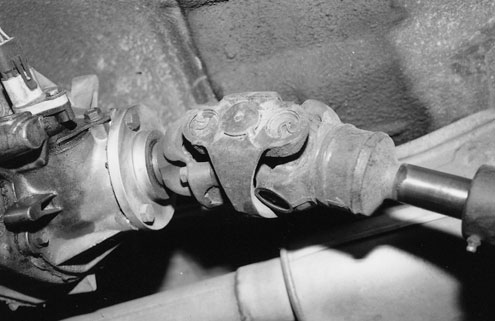Drive Shaft Angle Tech

We get quite a few emails with drive shaft angle questions, recently we had a customer looking for help with some binding issues. We figured it would be a good tech note for others!
Stephen
It has been a few months but i finally got things almost back together. The issue i have now is that my front drive shaft is binding at the axle joint. With weight on the springs and the truck sitting on the ground it does not bind but as soon as i raise the truck about an inch or so it starts to bind.
I noticed that these springs don't have a degree wedge. My old skyjacker 8” springs did have a wedge. I think I need to get some degree shims. My plan is to loosen the u bolts and use a jack to rotate the axle and measure the change in angle. How much can I safely rotate the axle.? This is a stock dana 60.
The main cause of this is i had to move my drive train forward to clear the firewall which increased the driveshaft angle….
Thanks for your help
Customer
Hi Customer, it's easier than that actually. The problem with shimming the pinion up is that you take away castor angle. Some background you may already know: Castor is the side view angle of a line between your upper and lower balljoints or kingpins. The top of that line should be toward the rear of the vehicle. The intuitive way for most people to think of this is the fork angle on a bicycle or motorcycle. That castor angle on a bicycle is why you can ride it with no hands and you can imagine how it would feel if the fork was straight up and down. Basically, castor makes your truck return to center after a turn and helps keep it straight going down the road.
You can measure your castor angle on your D60 by parking on level ground and putting an angle finder right on the steering arm. The tip of the arm should be up and the angle that it is up is your castor. Factory spec for the straight axle GMs was 6-8 degrees depending on the year and that's a good range to shoot for. You can see that the problem with a pinion shim is that when you shim the pinion up, you take castor away. We generally try to make the truck drive nice by leaving good castor and deal with the driveshaft after that.
In your case you can measure the castor and maybe put a short shim in there to help the pinion angle a little bit. Past that, you're either cutting and turning the housing (pretty big job) or running a higher angularity joint system. The 1410 yoke and joint system is one that is known for tolerating a good amount of angle and Tom Wood's Custom Driveshafts builds an offset ujoint that can achieve some pretty high angle numbers without changing the yoke or driveshaft end.
To check driveshaft angles you really need to put the frame up on stands or on a lift and let the front suspension droop all the way out. At that point, make sure the driveshaft spins freely at both the pinion and CV and that the slip has good engagement. A lot of trucks might see full droop rarely if ever but if stuff blows up when you get there, you still have a problem if it happens just once.
If full droop is a big problem that isn't possible to solve, running limit straps to keep the suspension from drooping too far would be on the table. Limit straps are not very common with leaf springs since they limit themselves pretty well but if the rest of your parts aren't playing nice, limiting the droop travel might be on the table.
Hope this helps
thanks
Stephen Watson



